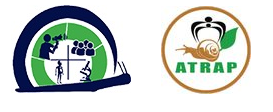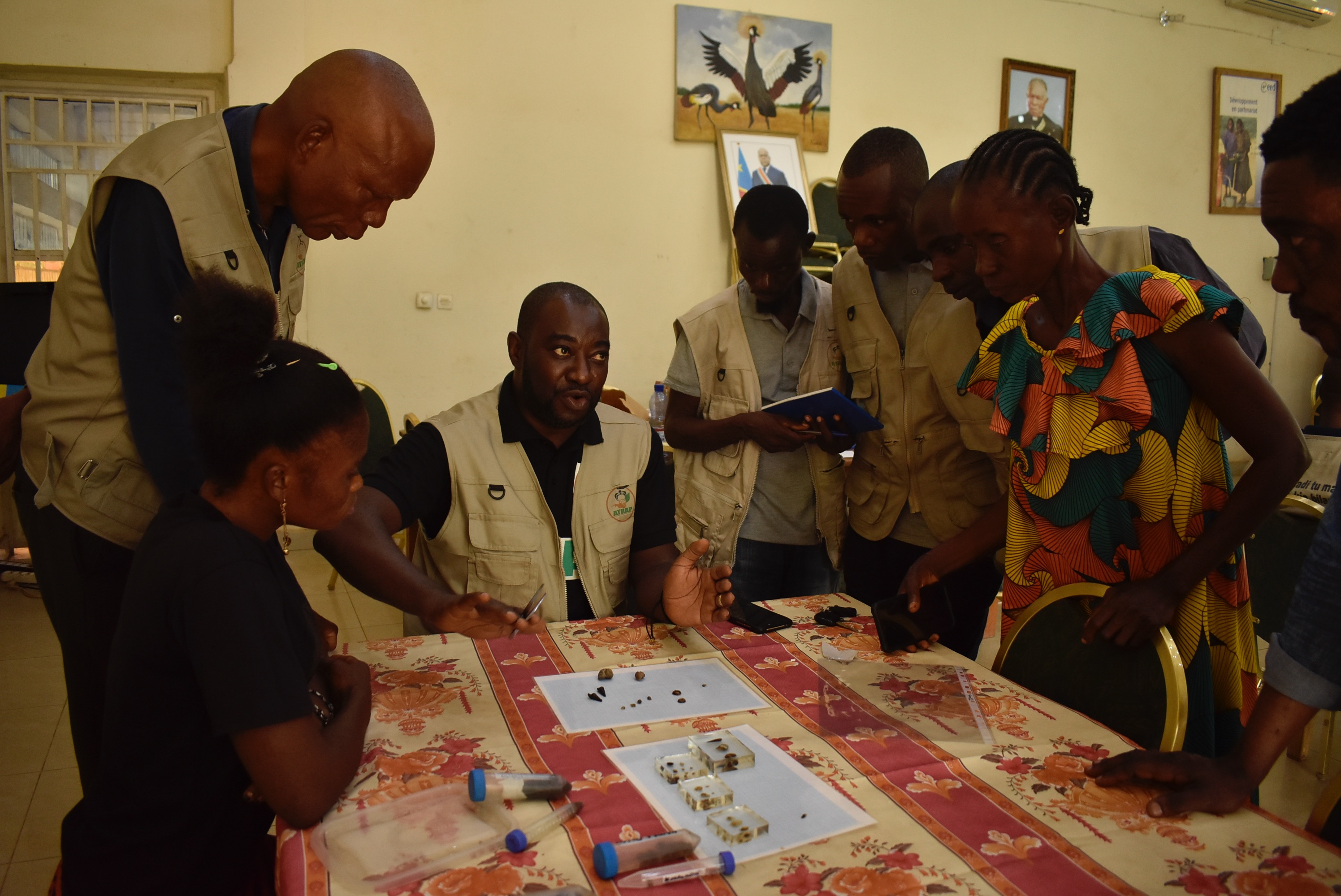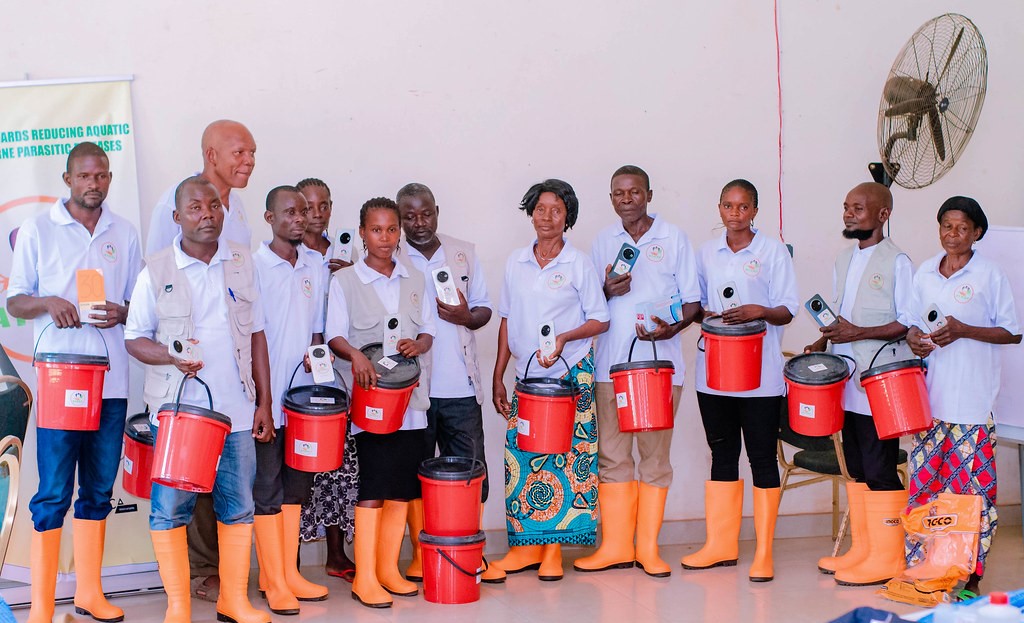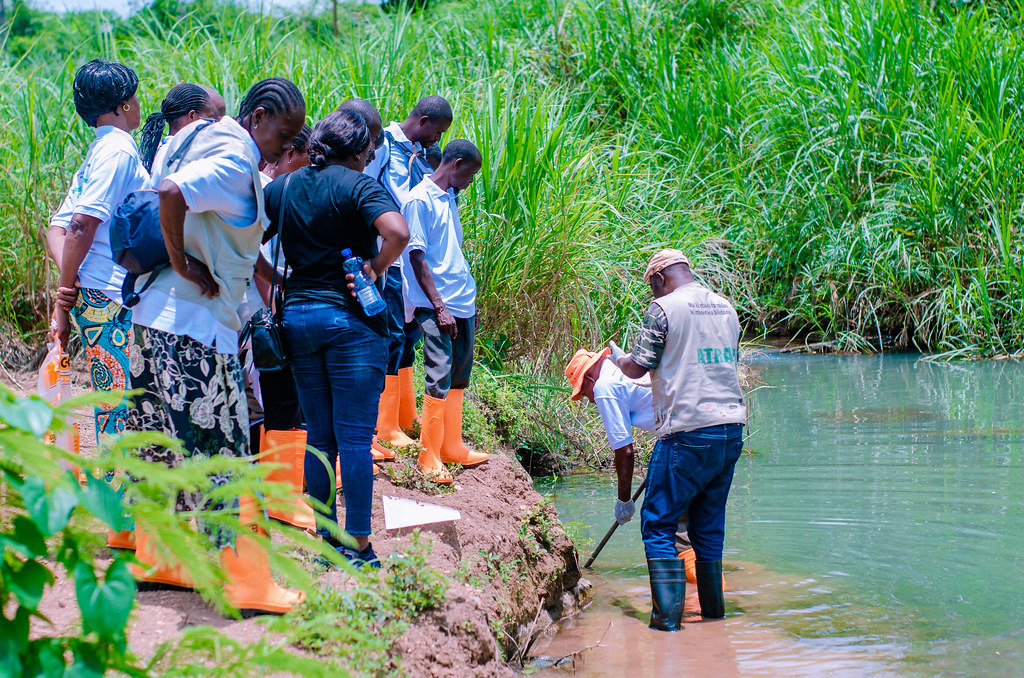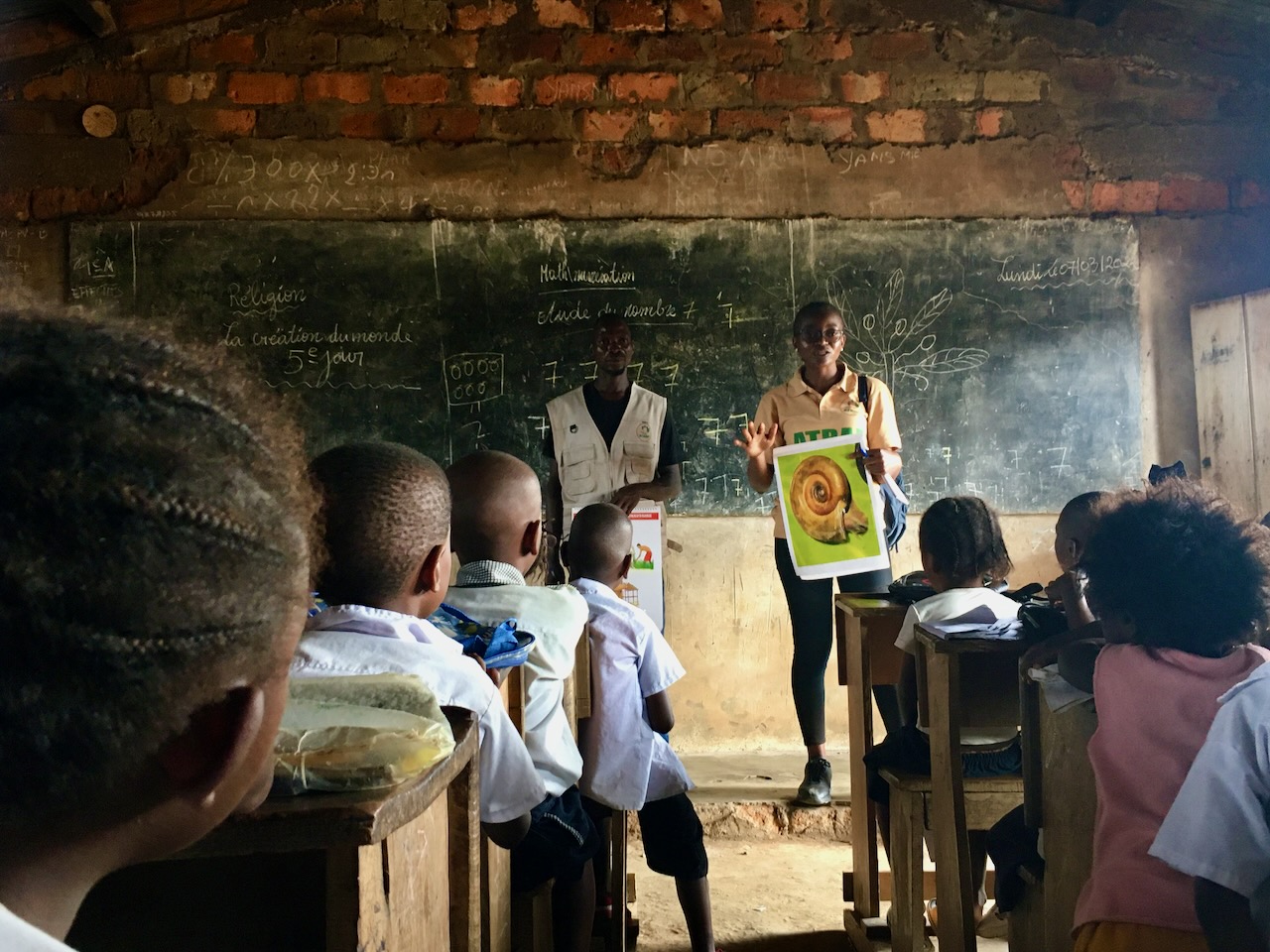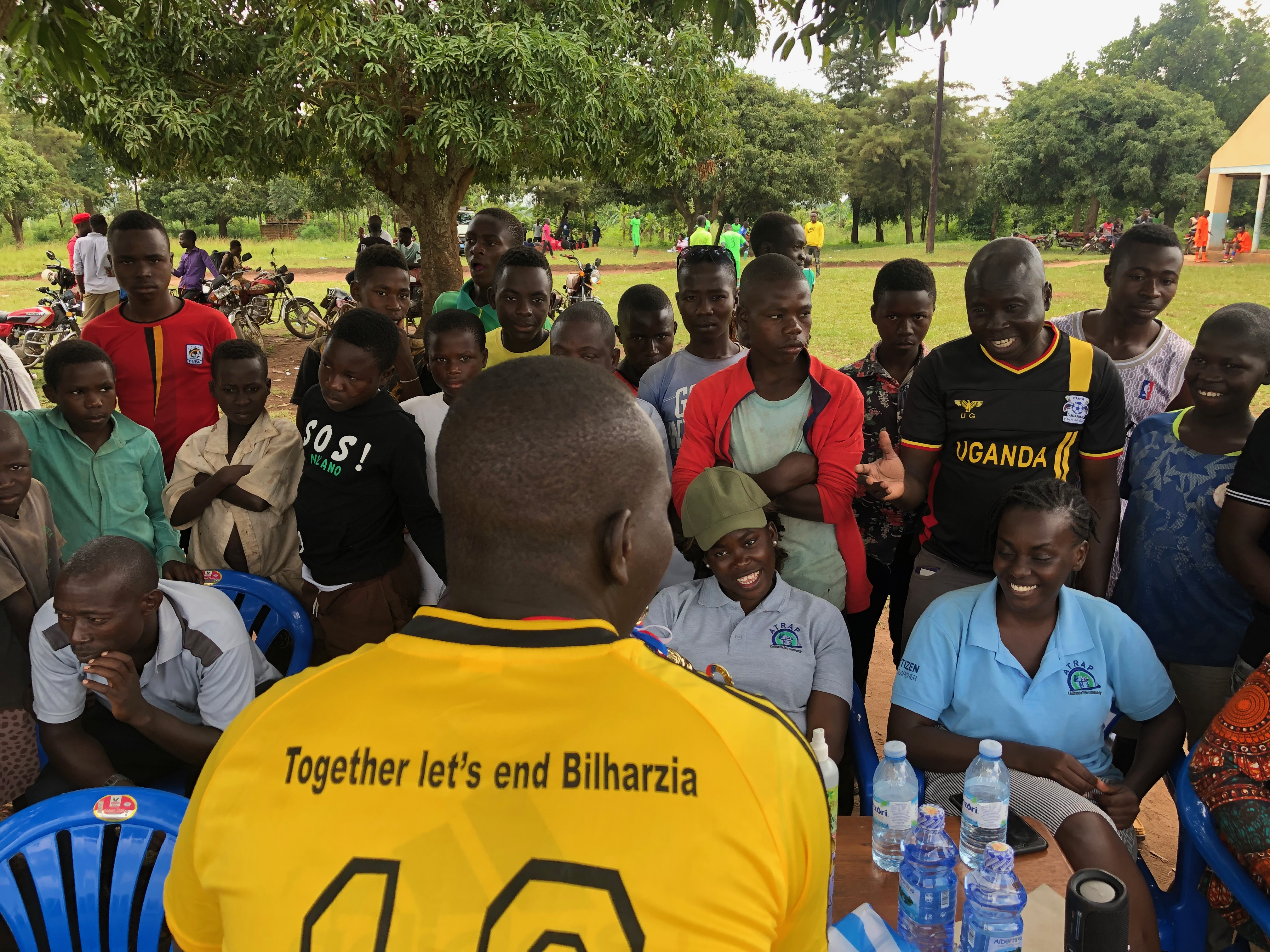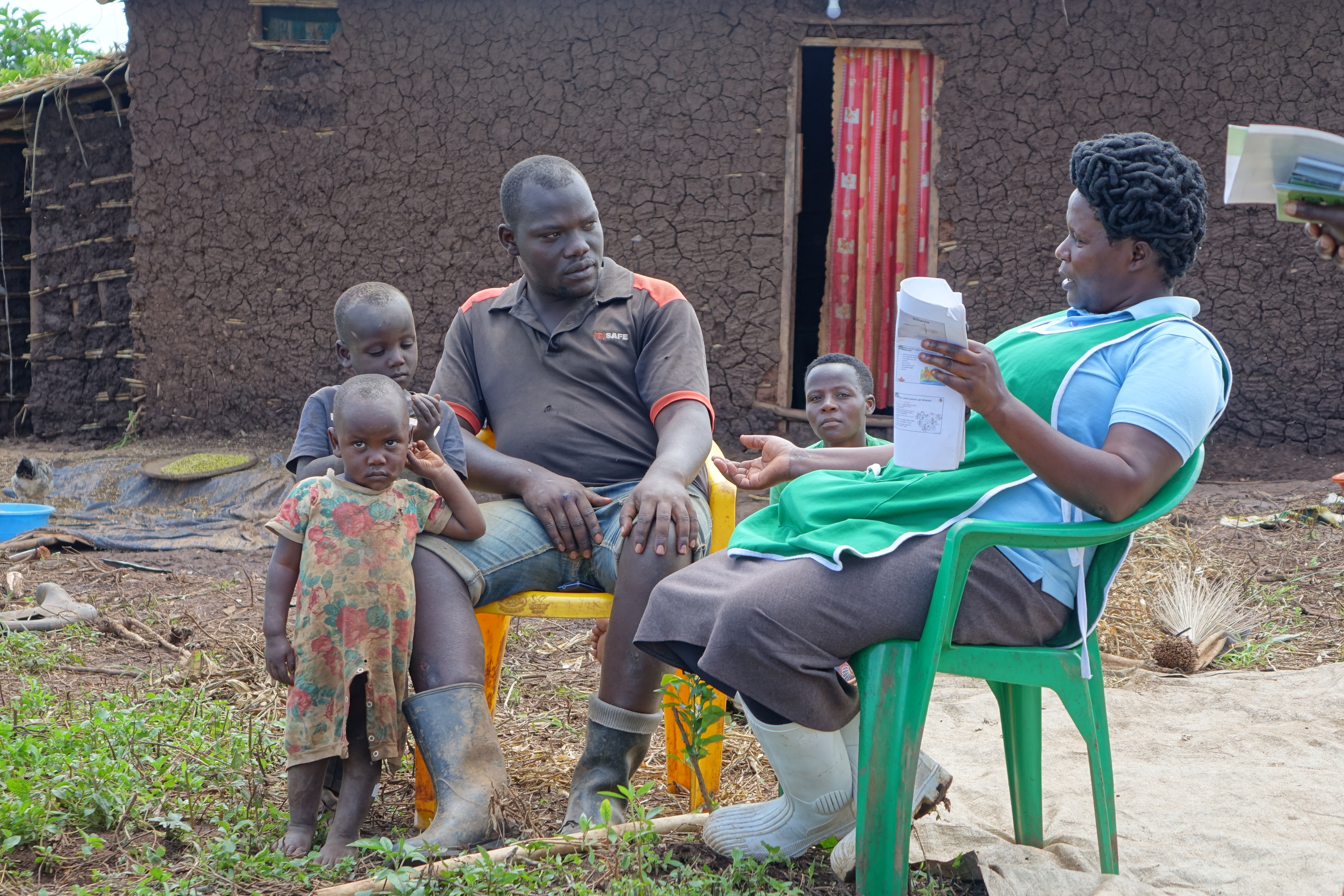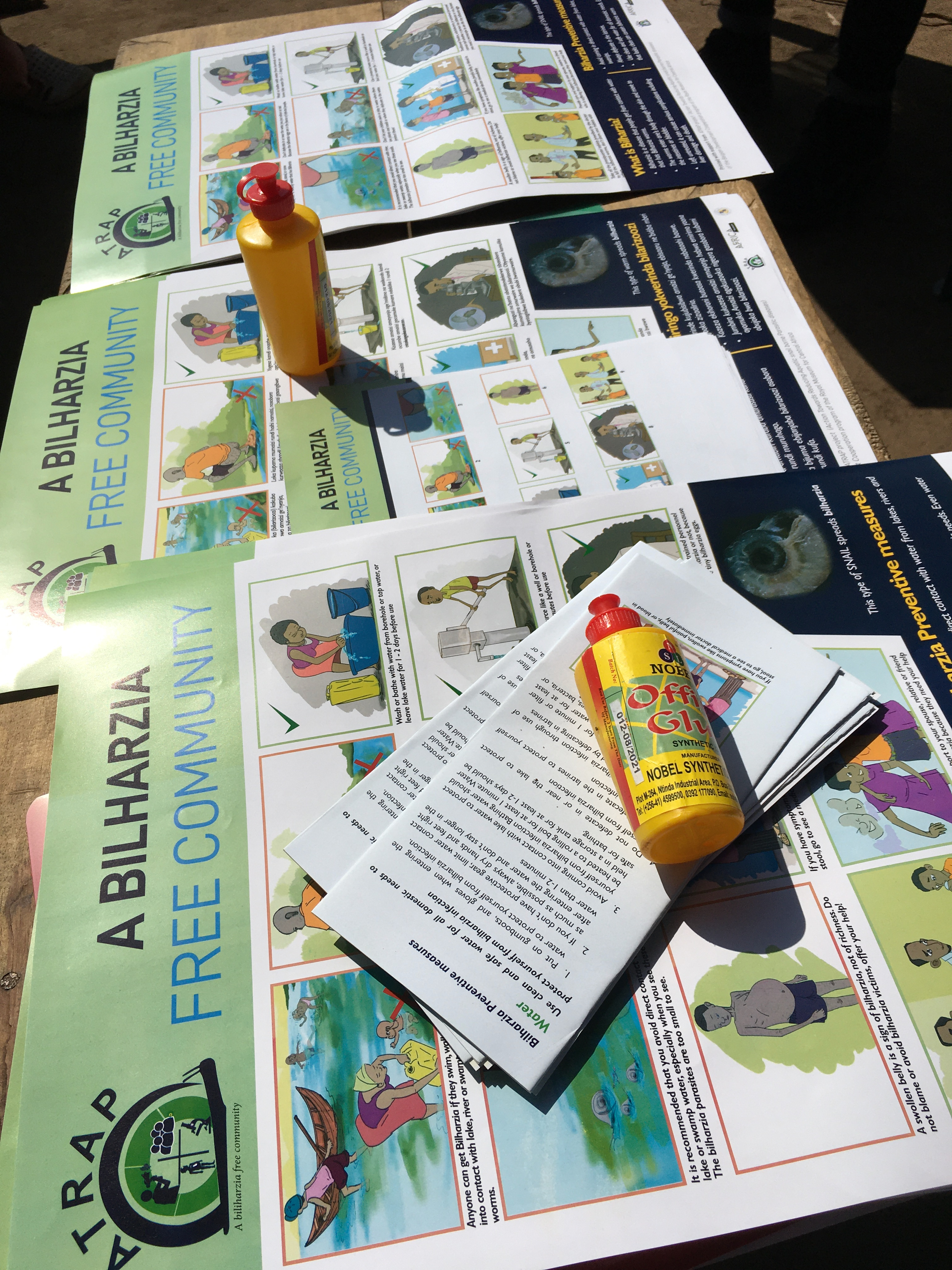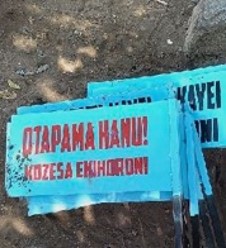Community engagement
Engaging and supporting communities
A cornerstone of ATRAP’s approach is the active involvement of local communities through citizen science. This begins with careful selection of community members, who are motivated, trusted, and rooted in our target study sites. Participant recruitment is conducted in collaboration with the local leaders, with a strong emphasis on gender balance to ensure equitable participation. Once selected, the community members also referred to as citizen scientists undergo comprehensive training designed to equips them with the knowledge and skills to identify disease vectors, particularly freshwater snails that transmit schistosomiasis and mosquitoes. They are also trained on how to collect, record, and share relevant environmental data. These training sessions combine theoretical and practical hands-on sessions. Lastly, to enable their participation, the citizen scientists are provided with essential tools and equipment, including field kits for vector identification and sampling, smartphones for data collection and protective gear like gumboots.
Raising awareness
Apart from vector monitoring, the citizen scientists act as key communicators to the wider community. They lead the development of conxtentually tailored schistosomiasis awareness campaigns designed to meet the specific needs of their diverse communities. The prefered channels for communication ranged from door-to-door vists, drama, songs to football tournaments. These efforts have reached more than 15 communities and over 50,000 people, educating them mainly on schistosomiasis prevention to promote behaviour change. Read more here.
Inspiring action
The awareness-raising campaigns played a crucial role in inspiring community action. Building on key messages co-developed with citizen scientists, focused on promoting the use of safe water sources and proper sanitation, locally appropriate initiatives were implemented. Notably, signages discouraging open defecation and encouraging latrine use were created and installed to guide community members toward healthier behaviours. Additionally, local leaders advocated for the repair of previously broken boreholes, improving access to clean water.
